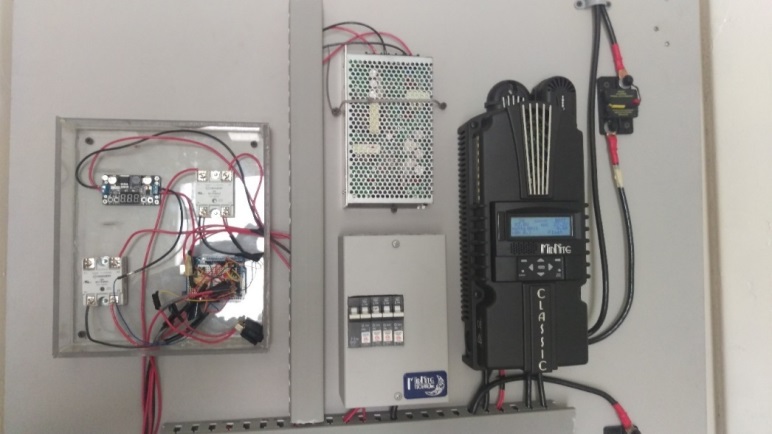Design and Testing of a Remote Deployable Water Purification System Powered by Solar Energy
Keywords:
renewable energy, solar power, clean water, water purification, self-sufficientAbstract
The design of an all-inclusive, self-sufficient, sustainable water purification system for application in developing regions of the world can improve living conditions for people world-wide, especially in regions where access to clean drinking water is limited or unavailable. According to the World Health Organization, the 2015 global census estimated that 663 million people worldwide live without access to safe drinking water sources [1]. An estimated 315,000 children die each year from diarrheal diseases caused by lack of clean water and poor sanitation [2]. Based on these statistics, an all-inclusive, self-sufficient, remote-deployable water purification system has been designed, constructed, and tested to validate the concept of a renewable energy system.
The system is integrated into a standard 20-foot shipping container for ease of deployment worldwide. Once situated in the operating area, the shipping container is used as the system shelter and solar panels are mounted to the roof at a location-dependent fixed angle. The solar panels are connected to a battery bank which operates the system. The water purification process utilizes a five-step progression which filters the contaminated freshwater, removing suspended particles and bacteria from the water and purifying the water to the standards of the EPA Safe Drinking Act [3].
Testing verifies the capability of the solar panels to generate enough electricity to power the system and recharge the battery bank. The solar panel array has the rated power output of 2,320 Watts. The water purification operates on a maximum of 97.9 Watts of available power. With the fully charged battery bank, the water purification system can operate for 24-hours without additional solar input. With a freshwater source, the purification system can yield up to 440 liters of water per hour.
References
WHO Library Cataloguing-in-Publication Data, “Progress on sanitation and drinking water-2015 update and MDG assessment,” pp. 17-35, 2015.
“Statistics-the hard facts behind the crisis,” http://www.wateraid.org/what-we-do/the-crisis/statistics. February 24,2017.
“Safe drinking water act,” https://www.epa.gov/sdwa, 2002.
C. Binns, “How long can a person survive without water? ” http://www.livescience.com/32320-how-long-can-a-person- survive-without-water.html, November 30, 2012.
H. Perlman, “How much water is there on, in, and above the Earth ” http://water.usgs.gov/edu/earthhowmuch.html, December 2, 2016.
“Current world population,” http://www.worldometers.info/world-population December 11, 2016.
B. Chaouchi, A. Zrelli, and G. Slimane, “Desalination of brackish water by means of a parabolic solar concentrator,” Desalination, vol. 217, no. 1, pp. 118-126, 2007.
“Water and poverty,” https://lifewater.org/blog/water-poverty/, December 26, 2017.
Managing Water Under Uncertainty and Risk, The United Nations World Water Depvelopment Report 4, Paris, UNESCO, 2012.
“Water facts and figures,” http://www.unwater.org/water-cooperation-2013/water-cooperation/facts-and-figures/en/, 2013.
S. Nasr, “How the slingshot water purifier works,” http://science.howstuffworks.com/environmental/green-tech/ remediation/slingshot-water-purifier.htm, July 27, 2009.
“Energy poverty,” http:// www.iea.org/topics/energypoverty/, January 10, 2017

Published
How to Cite
Issue
Section
License
Submission of a manuscript implies: that the work described has not been published before that it is not under consideration for publication elsewhere; that if and when the manuscript is accepted for publication. Authors can retain copyright in their articles with no restrictions. is accepted for publication. Authors can retain copyright of their article with no restrictions.
Since Jan. 01, 2019, AITI will publish new articles with Creative Commons Attribution Non-Commercial License, under The Creative Commons Attribution Non-Commercial 4.0 International (CC BY-NC 4.0) License.
The Creative Commons Attribution Non-Commercial (CC-BY-NC) License permits use, distribution and reproduction in any medium, provided the original work is properly cited and is not used for commercial purposes.



